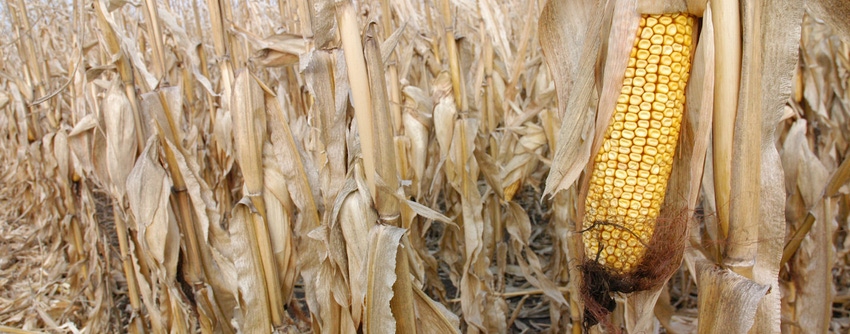
Editor’s Note: Alejandro Plastina and Chad Hart are Iowa State University Extension economists. They can be contacted at [email protected] and [email protected].
With low crop prices, profit margins for corn and soybeans at current production costs are indeed quite tight. For some farmers, margins are negative. There are some things you can do to help survive today’s challenges, such as trimming crop production costs where possible and being ready to take advantage of grain marketing opportunities on short-lived weather rallies. Can you reduce family living expenses? Are there part-time job opportunities outside of agriculture, or maybe custom work, to help you fill your income gap?
Farmers should also understand the USDA farm program they are participating in, calculate their farm program payments, and use those projections to help with cash flow planning. The Agriculture Risk Coverage (ARC) and Price Loss Coverage (PLC) programs were authorized by the 2014 Farm Bill. ARC offers two options for participating: ARC-County (ARC-CO) and ARC-Individual Coverage (ARC-IC).
A total of 22,528,220 base acres of covered commodities were initially enrolled in the new commodity programs in Iowa. Corn and soybeans accounted, respectively, for 69% and 30% of those base acres. In Iowa, 97% of all base acres were enrolled in ARC-CO.
Payments in 2015 didn’t cover negative margins on rented acres
In 2015, total ARC-CO payments in Iowa amounted to $908,914,323. The average ARC-CO payment per corn and soybean base acre amounted to $48 and $10, respectively, after 6.8% sequestration. Those payments were issued in late October 2015, but they corresponded to the 2014-15 marketing year.
Even the highest ARC-CO payment, which was in O’Brien County ($78.79), falls short of covering the negative margins on rented acres in 2015: negative $211 for corn following corn, negative $104 for corn following soybeans, and negative $103 for soybeans (Plastina 2016).
The payment per base acre was calculated as 85% of the difference between the county crop revenue and the ARC-CO guarantee revenue in 2014. The county crop revenue is the product of county yield times the national marketing year average price ($3.70 for corn and $10.10 for soybeans). The ARC-CO guarantee revenue in 2014 was calculated as 86% of the product of the guaranteed price and the five-year Olympic average of the county yields in 2009-2013.
NOTE: The Olympic average is calculated as the simple average of the remaining numbers after eliminating the highest and the lowest from the calculations.
The guaranteed price in 2014 was calculated as the five-year Olympic average of the national marketing year average prices in 2009-2013, and amounted to $5.29 per bushel of corn and $12.27 per bushel of soybeans (See Ag Decision Maker File A1-32 for further details: extension.iastate.edu/agdm/crops/html/a1-32.html).
Payments for corn and soybean base acres have a wide range
ARC-CO payments per corn base acre ranged from $0 to $78.79 (after sequestration) across counties, and were generally higher in northern counties, and lower in central and southern counties (see figure 1, panel a). That pattern was determined by the higher-than-average yields observed in southern counties and the lower-than-average yields observed in northern counties in 2014, since the marketing year average price was $1.55 lower than the Olympic average price for all counties.
ARC-CO payments for soybean base acres ranged from $0 to $51.71 (after sequestration) across counties, with the highest payments in northern counties and the central region, and very low payments everywhere else. Although the marketing year average price for soybeans was $2.17 lower than the Olympic average price, most counties received very low payments due to record yields in 2014.
No PLC payments were triggered in 2015, since the 2014-15 marketing year average prices were equal to or higher than the reference prices established in the farm bill: $3.70 per bushel of corn and $8.40 per bushel of soybeans.
Would projected payments in 2016, if triggered, cover your margin?
USDA will issue ARC/PLC payments associated with the 2015-16 marketing year, if any are triggered, in October 2016 when the official marketing year average price will become available. Using the latest USDA price projections ($3.60 for corn and $8.80 for soybeans), and projected county yields (extrapolated from 2014 into 2015 by the ratio of crop reporting district yields in 2014 to 2015), ARC-CO payments compute to $43 per corn base acre and $19 per soybean base acre in 2016.
There are 51 counties where projected ARC-CO payments will be enough to cover the negative $51 gap between crop revenue and total costs of production of corn following soybeans per rented acre (Plastina 2016). However, the highest projected ARC-CO payment, corresponding to O’Brien County, amounts to $75.85, well below the negative $151 and $115 gaps to cover total costs of production of corn following corn and soybeans, respectively, per rented acre.
Projected yields in 2015 are higher than the Olympic average yields over 2010-2014 for all counties but Adams (soybeans), Lyon (corn), and East and West Pottawattamie (corn and soybeans). However, the projected prices would drive crop revenues below the ARC-CO guarantee revenues for corn and soybean base acres in 79 and 69 counties, respectively. The 2015 ARC-CO guaranteed prices are unchanged from 2014, since the 2014 prices that are incorporated into the calculation of the rolling five-year Olympic average are the lowest prices in 2010-2014 and therefore do not affect the resulting average.
PLC payments in Iowa would average $9.50 per corn base acre, but would be null for soybean base acres. PLC payments are calculated as 85% of the difference between the marketing year average price and the reference price times the PLC payment yields for each farm (old countercyclical payment yields, unless updated in early 2015).
ISU tools available to help you calculate possible payment
Project your USDA farm program payments using ISU’s Payment Calculators:
• ARC-CO Payments: extension.iastate.edu/agdm/crops/xls/a1-32arcco2015calculator.xlsx
• PLC Payments: extension.iastate.edu/agdm/crops/xls/a1-32plcpaymentcalculator.xlsx
References: Plastina, A. 2016. “2016 Gross Crop Margins Negative despite Lower Costs.” Ag Decision Maker Newsletter. Vol 20, no. 3.
About the Author(s)
You May Also Like




